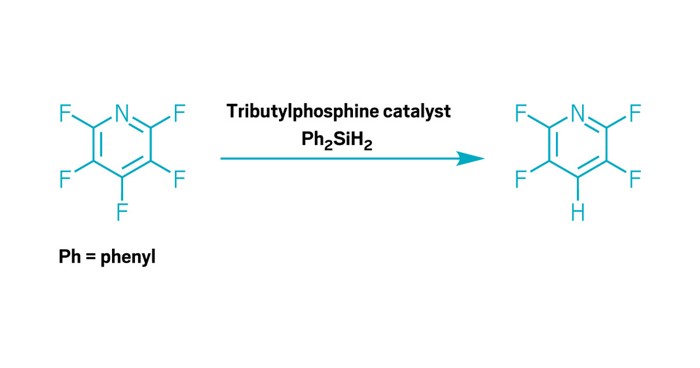Advertisement
Grab your lab coat. Let's get started
Welcome!
Welcome!
Create an account below to get 6 C&EN articles per month, receive newsletters and more - all free.
It seems this is your first time logging in online. Please enter the following information to continue.
As an ACS member you automatically get access to this site. All we need is few more details to create your reading experience.
Not you? Sign in with a different account.
Not you? Sign in with a different account.
ERROR 1
ERROR 1
ERROR 2
ERROR 2
ERROR 2
ERROR 2
ERROR 2
Password and Confirm password must match.
If you have an ACS member number, please enter it here so we can link this account to your membership. (optional)
ERROR 2
ACS values your privacy. By submitting your information, you are gaining access to C&EN and subscribing to our weekly newsletter. We use the information you provide to make your reading experience better, and we will never sell your data to third party members.
Catalysis
Cobalt coaxes enamides into asymmetric hydrogenation
Chemists use the reaction to develop a greener route to epilepsy drug
by Bethany Halford
May 28, 2018
| A version of this story appeared in
Volume 96, Issue 22

Asymmetric hydrogenation—adding H2 across a double bond in a manner that produces a single alkane enantiomer—has helped chemists make medicines, fragrances, and fine chemicals. But the transformation requires expensive precious metal catalysts or catalysts that are air- and moisture-sensitive. Seeking to make asymmetric hydrogenation easier, cheaper, and more environmentally friendly, chemists led by Princeton’s Paul J. Chirik and Merck & Co.’s Michael Shevlin have been crafting cobalt catalysts for the reaction. The researchers discovered they can use zinc in a single-electron process that reduces earth-abundant Co(II) to Co(I). The reduced cobalt is better at coordinating with chiral phosphine ligands, producing complexes that asymmetrically hydrogenate enamides (Science 2018, DOI: 10.1126/science.aar6117). The reaction takes place in methanol, a green solvent that solubilizes H2 as well as drug intermediates with polar groups. The chemists used the transformation to create the epilepsy drug levetiracetam (Keppra) from its enamide precursor (shown). When they did the reaction on 200-gram scale with only 0.08 mole % catalyst loading, they got 97% yield and 98.2% enantiomeric excess of the desired isomer.





Join the conversation
Contact the reporter
Submit a Letter to the Editor for publication
Engage with us on Twitter